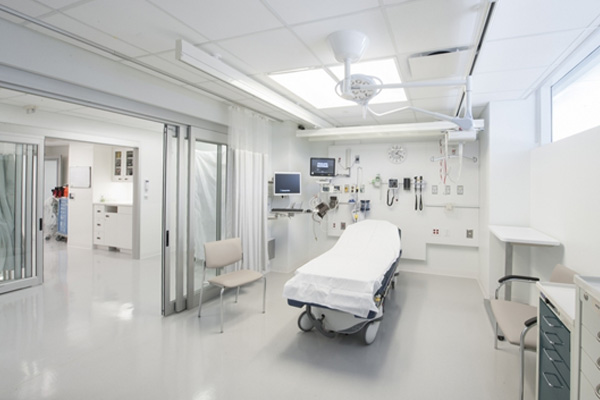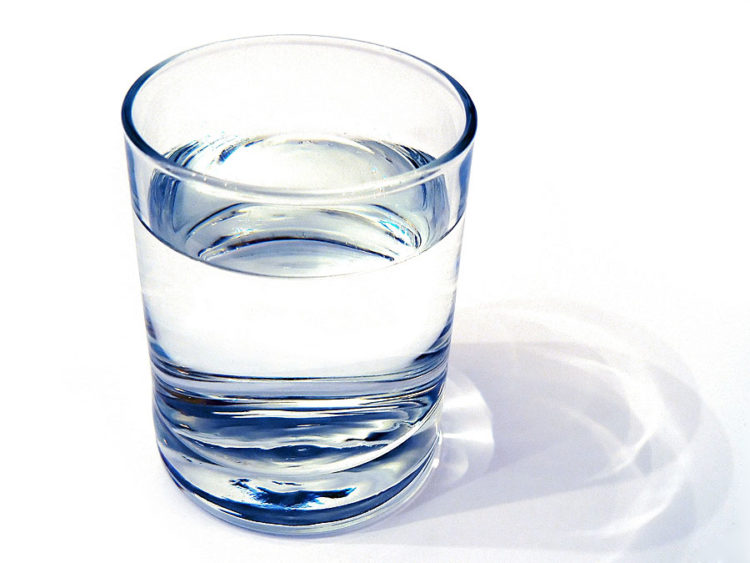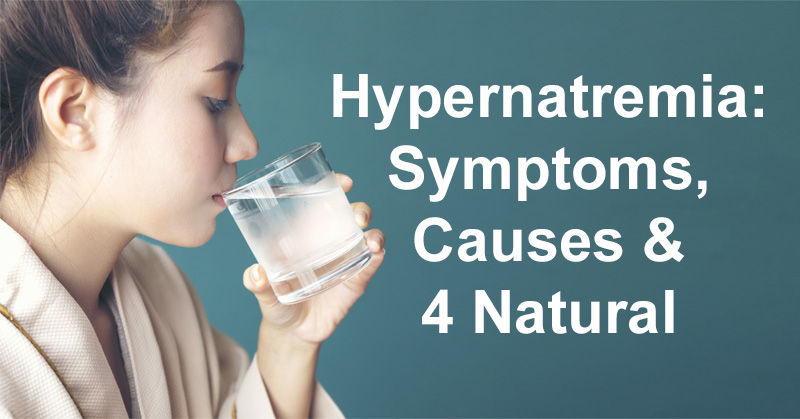Hypernatremia is a rare condition that occurs because of dehydration and imbalanced electrolytes such as sodium and potassium. Between one and ten percent of hospital patients develop severe hypernatremia. Because it is not a commonly known condition, it’s important to know hypernatremia causes, hypernatremia symptoms and appropriate hypernatremia treatment.
What is Hypernatremia
Hypernatremia is a condition caused by dehydration and imbalanced electrolytes such, as sodium and potassium. An important distinction between hypernatremia and common dehydration is who is affected by these problems.
Those who don’t drink enough water are more prone to experiencing dehydration. However, the elderly or people recovering from illnesses and surgery are most likely to develop hypernatremia symptoms.
Around 1-10 percent of all hospital patients develop severe hypernatremia (higher prevalence exists among older patients). Only about .01-1.4 percent of patients visiting a hospital have the condition before admission.

Studies have found that mild hypernatremia may affect up to 22.2 percent of geriatric hospital patients. Additionally, 19 percent of those in nursing homes and 6 percent of non-geriatric patients may be affected. (1)
Hypernatremia Causes
The most prevalent hypernatremia causes are impaired thirst, restricted access to water, or increased fluid loss.
Normal intake and excretion of water balances levels of sodium in the blood. This includes rising and falling levels of other electrolytes including potassium. For sodium to rise to dangerously high levels, there must be an abnormal exchange between sodium/water/potassium.
Those who may be at risk for hypernatremia include people admitted to a hospital, and adults who have kidney damage or acute kidney injury. Anyone recovering from an acute infection, especially during or after hospitalization is also at risk.
Additionally, those with a damaged hypothalamus, dementia, or diabetes are at risk.
People receiving intravenous fluids should especially be aware, as this can alter thirst and urination mechanisms.
Some have consumed too much salt/sodium due to use of saline products such as in tube feeding.

Infants with inadequate breastfeeding can develop infant dehydration. Neonatal hypernatremia is most likely to affect infants in their first 3 weeks of life. This is especially true if they have lost 10 percent or more of their birth weight. Signs include seizures and abnormal lethargy.
Hypernatremia Symptoms
Oftentimes, hypernatremia symptoms go unnoticed. Patients with hypernatremia may be unaware of their condition until it becomes serious.
When symptoms of hypernatremia appear, they may include sudden and severe thirst. Intense thirst may also be accompanied by polyuria, or the production of large volumes of dilute urine. In this case urine often appears lighter in color than normal (less yellow). Also, the need to urinate happens more frequently. Look also for dry mouth.
Another symptom can be cognitive changes involving the central nervous system (CNS). These can include brain fog, confusion and dizziness.
In addition, look for fatigue, weakness and lethargy, including muscular aches or weakness and trouble moving normally. Mood changes such as irritability, and experiencing involuntary myoclonic jerks, cramps and seizures may occur.
Other complications include cardiovascular and/or circulatory problems, such as abnormal heartbeat rhythms.
Hypernatremia can be deadly, especially if a patient is already critically ill or elderly. Hypernatremia patients that received intensive care in the hospital have been found with mortality rates of 30-48 percent.
4 Natural Methods of Hypernatremia Treatment
Hypernatremia treatment includes simple, natural actions and methods.
1. Drink Plenty of Water & Avoid Dehydration
Those without diabetes or brain damage should have a thirst signal to prevent hypernatremia from happening. This because mild-to-moderate dehydration should not trigger hypernatremia in most people.
Even so, drinking enough water to prevent dehydration symptoms is the best way to reduce the risk of hypernatremia.

To prevent dehydration, make sure not to over-use diuretics or weight loss pills. For those who are experiencing vomiting or diarrhea, it is especially important to drink enough fluids.
2. Consult Your Doctor in Case of Chronic Dehydration
Extremely important with hypernatremia treatment is to consult a doctor in the event of chronic dehydration.
A doctor can determine whether hyponatremia symptoms exist, and whether they are short-term (acute) versus chronic. Your doctor will also help determine how to restore serum sodium levels if necessary.
3. Eat a Healthy Diet
For those with any condition that affects sodium, glucose, insulin and water levels, eating a healthy diet is key. Patients with diabetes, especially nephrogenic diabetes insipidus, have an increased risk for hypernatremia.
Many who are chronically ill are typically advised to eat a low-sodium, low-protein diet. This type of diet is high in things like fresh vegetables and fruit for electrolytes.

It may also be necessary to take a thiazide diuretic to prevent fluid retention. According to the Cleveland Clinic, “The diuretic and low-sodium diet act to create a mild volume depletion and therefore result in a reduction in urine output. A decrease in protein intake results in a decrease in obligate renal solute excretion and therefore a decrease in water excretion and urine flow.”
4. Monitor Urine For Color & Check For Other Symptoms
Experts recommend that as long as your thirst signal is not impaired for any reason, keep water and sodium levels in balance by not forcing yourself to drink more water than you’re thirsty for. Drink water throughout the day depending on how you feel, while also staying hydrated via eating a healthy, unprocessed diet.
It’s also recommended to drink a good sports drink with electrolytes (not plain water) during long races, marathons or workouts. It’s helpful to keep track of how often you’re going to the bathroom (look for a pale yellow color, not clear or very dark).
For avid exercisers, consider that the opposite of hypernatremia —hyponatremia, or water intoxication as it’s sometimes called — is also possbile. One study that was conducted by the medical staff of the Boston Marathon found that an alarmingly high percentage of the finishers of the 2002 Boston marathon had developed hyponatremia — a potentially fatal condition — during the race. Hyponatremia results when the sodium concentration of the blood falls too low due to prolonged sweating combined with excessive fluid consumption. Symptoms include dizziness, muscle cramping, confusion, and stomach bloating.” (2)
Visit your doctor if signs of dehydration or hypernatremia persist. Finding a good hypernatremia treatment is important for overall health.


